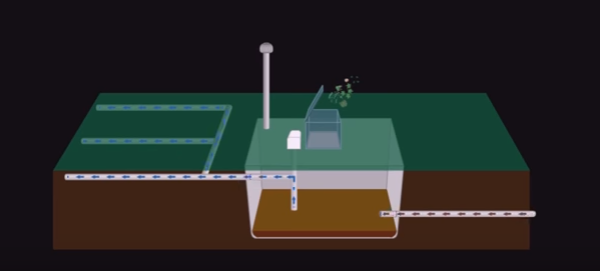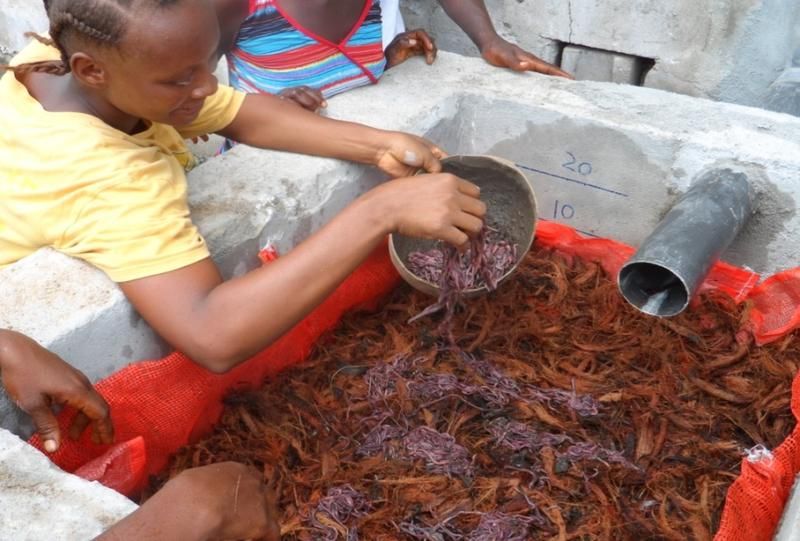Earthworm-filled Toilets Turn Waste Into Fertilizer
Published on by Water Network Research, Official research team of The Water Network in Technology
Tiger worm toilets which turn human waste into fertilizer could prove to be an affordable and sustainable sanitation solution for increasingly crowded slums and refugee camps.

The earthworm-filled toilets take up less space than pit latrines, need to be emptied far less frequently, present less of a health risk, and can provide communities with rich compost for growing crops, according to sanitation specialists.
The tiger worm toilets were first trialed by charity Oxfam in slums in the Liberian capital of Monrovia in 2013, and have since been installed in refugee camps in Ethiopia and Myanmar.
With a record 65.3 million people uprooted by conflict or persecution worldwide in 2015, and urban populations booming across the globe, aid agencies say innovation is key to improving water and sanitation for camps and communities.
"The joy of tiger worms is that they reproduce faster with the more poo they have to feed off, so they are self-sustaining," Andy Bastable, Oxfam's head of water and sanitation, told the Thomson Reuters Foundation by phone.
While pit latrines have to be cleared out regularly, which is time-consuming and costly, the tiger worm toilets built in Monrovia four years ago have yet to need emptying, Oxfam said.
 The main drawback is the initial cost of buying the two kilograms of tiger worms needed per toilet, according to the U.N. refugee agency, which worked with Oxfam to install the toilets in a camp for South Sudanese refugees in Ethiopia.
The main drawback is the initial cost of buying the two kilograms of tiger worms needed per toilet, according to the U.N. refugee agency, which worked with Oxfam to install the toilets in a camp for South Sudanese refugees in Ethiopia.
"Tiger worm toilets are promising but they aren't the silver bullet to change sanitation across Africa," Bastable added.
"The winner will be a toilet technology that can be adapted to individual countries to meet the needs of a specific community."
While new technologies are seen as crucial, attitudes towards water and sanitation must be challenged in rural areas and countries where open defecation is rife, such as Nigeria and India, said Remi Kaupp, a technical advisor at charity WaterAid.
Aside from tiger worm toilets, other innovations being used and tested in refugee camps include harnessing solar energy to turn human waste into smokeless cooking fuel, and using urine to generate electricity and light up toilets at night.
Read more at: Reuters Africa
Media
Taxonomy
- Public Health
- Solid Waste Management
- Biological Treatment
- Sanitation
- Waterless Sanitation
- Sanitation & Hygiene
- Waste Management
- Water Sanitation & Hygiene (WASH)
3 Comments
-
Thanks for sharing such topic, but what is the certain conditions or appropriate setting required to apply this technique, is it suitable for semi-arid areas like Yemen, where we are facing acute water shortage for drinking and domestic use.
-
I have done a bit of work with Tiger worm toilets in Uganda using pour flush toilets. I thought it may be challenging to use in emergencies mostly due to the usually less than adequate water supply. Is there currently a design in use that doesn't utilize water?
1 Comment reply
-
Interesting. Where in Uganda has it been tried, and where are the worms bred?
-
-
The process the article alludes to is vermfiltration, with the worms living in the vermfilter. Treating toilet effluent is straight forward, and not requiring emptying for long periods is not uncommon. As for adaptability Wastewater Wizard can design/build vermifiltration plants capable of treating wastewater from the simple toilet systems to large commercial operations serving distilleries, breweries, tourist resorts, food processors , agriculture and dairy industries, as well as residential developments (sewage). Treatment performance capabilities align to conventional biological wastewater treatment systems.